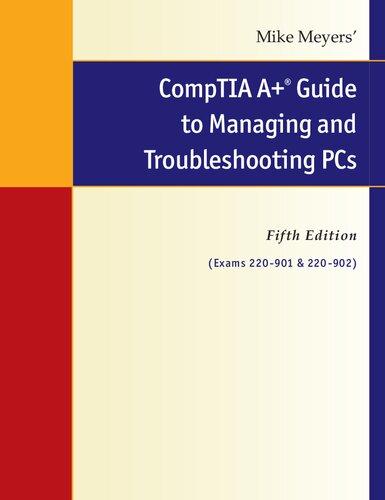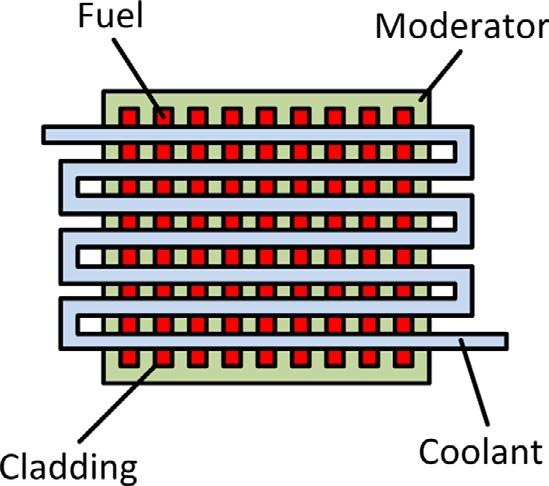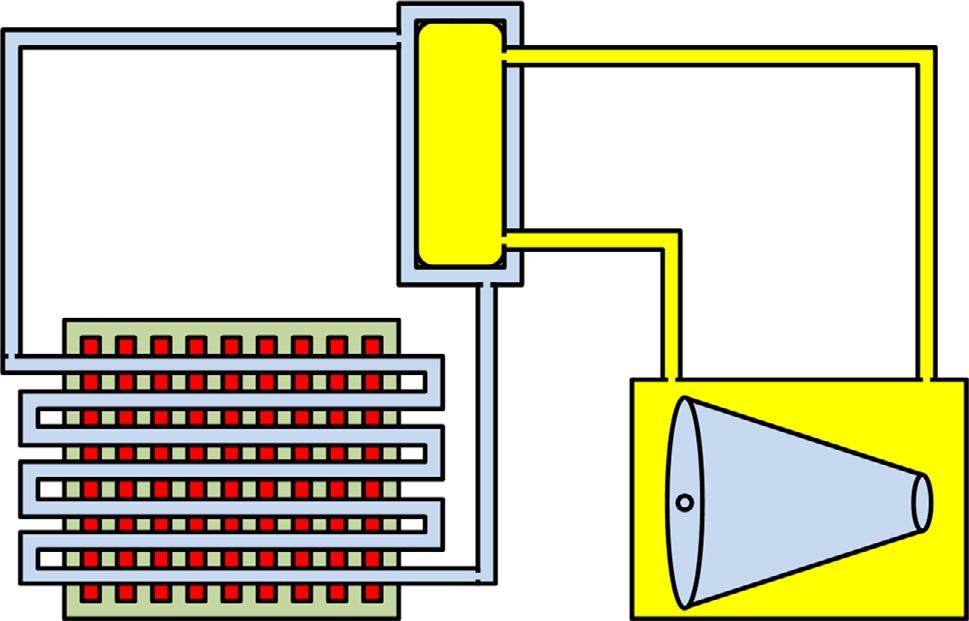Bound by Love (The Alliance, Book 10) Brenda K. Davies
https://ebookmass.com/product/bound-by-love-the-alliancebook-10-brenda-k-davies/
ebookmass.com
Shattered Gods Box Set: Books 1-3 Fox
https://ebookmass.com/product/shattered-gods-box-set-books-1-3-fox/
ebookmass.com
Just One Crush Carly Phillips
https://ebookmass.com/product/just-one-crush-carly-phillips/
ebookmass.com
Mike Meyers’ CompTIA A+ Guide the Managing and Troubleshooting PCs. Fifth Edition (Exams 220-901 & 220-902) Mike Meyers
https://ebookmass.com/product/mike-meyers-comptia-a-guide-themanaging-and-troubleshooting-pcs-fifth-editionexams-220-901-220-902-mike-meyers/
ebookmass.com
A History of the Social Sciences in 101 Books Cyril Lemieux (Editor)
https://ebookmass.com/product/a-history-of-the-social-sciencesin-101-books-cyril-lemieux-editor/
ebookmass.com
MalcolmJoyce
Butterworth-HeinemannisanimprintofElsevier
TheBoulevard,LangfordLane,Kidlington,OxfordOX51GB,UnitedKingdom 50HampshireStreet,5thFloor,Cambridge,MA02139,UnitedStates
# 2018ElsevierLtd.Allrightsreserved.
PortraitscourtesyofGrahamLowe,artistandillustrator, www.grahamloweartist.com
Nopartofthispublicationmaybereproducedortransmittedinanyformorbyanymeans,electronicormechanical, includingphotocopying,recording,oranyinformationstorageandretrievalsystem,withoutpermissioninwritingfromthe publisher.Detailsonhowtoseekpermission,furtherinformationaboutthePublisher’spermissionspoliciesandour arrangementswithorganizationssuchastheCopyrightClearanceCenterandtheCopyrightLicensingAgency,canbefound atourwebsite: www.elsevier.com/permissions.
ThisbookandtheindividualcontributionscontainedinitareprotectedundercopyrightbythePublisher(otherthanas maybenotedherein).
Notices
Knowledgeandbestpracticeinthisfieldareconstantlychanging.Asnewresearchandexperiencebroaden ourunderstanding,changesinresearchmethods,professionalpractices,ormedicaltreatmentmaybecomenecessary.
Practitionersandresearchersmustalwaysrelyontheirownexperienceandknowledgeinevaluatingandusing anyinformation,methods,compounds,orexperimentsdescribedherein.Inusingsuchinformationormethodstheyshouldbe mindfuloftheirownsafetyandthesafetyofothers,includingpartiesforwhomtheyhaveaprofessionalresponsibility. Tothefullestextentofthelaw,neitherthePublishernortheauthors,contributors,oreditors,assumeanyliabilityforany injuryand/ordamagetopersonsorpropertyasamatterofproductsliability,negligenceorotherwise,orfromany useoroperationofanymethods,products,instructions,orideascontainedinthematerialherein.
LibraryofCongressCataloging-in-PublicationData
AcatalogrecordforthisbookisavailablefromtheLibraryofCongress
BritishLibraryCataloguing-in-PublicationData
AcataloguerecordforthisbookisavailablefromtheBritishLibrary
ISBN:978-0-08-100962-8
ForinformationonallButterworth-Heinemannpublications visitourwebsiteat https://www.elsevier.com/books-and-journals
Publisher: KateyBirtcher
AcquisitionEditor: StevenMerken
EditorialProjectManager: PeterJardim
ProductionProjectManager: MohanaNatarajan
CoverDesigner: MariaInesCruz
TypesetbySPiGlobal,India
FUNDAMENTALCONCEPTS
1.1 SUMMARYOFCHAPTERANDLEARNINGOBJECTIVES
Theaimofthischapteristointroducethefundamentalconceptsassociatedwithnuclearengineering thatsupportthedetailexploredinthechaptersthatfollow.Extensivedetailisavoidedinpreferencetoa focusonthefoundationprinciplesassociatedwith,forexample,theorderofmagnitudeofquantitative aspectsofthefield,thedefinitionoftermsusedlaterinthebookandthegeneralaspectsassociatedwith nuclearreactordesign.Theconceptsandprinciplesselectedatthisstagearegivenfurtherelaboration laterinthetext;theyconstitutefeaturesthatintheauthor’sexperiencepervadethenuclearengineering disciplineirrespectiveofthespecificaspectofthefieldinwhichtheytendtoarise.Thesubjects discussedinthischapteralsorepresentconceptsthatareratherspecifictonuclearengineeringand donotalwaysariseinthestudyoftheother,moregeneralbranchesofengineering.Manyofthese stemfromthedisciplinesofnuclearphysicsandradiochemistrybutnonethelessarisefrequentlyin nuclearengineering.
Theobjectivesofthischapterareto:
•introducethemaindistinctionsof nuclearengineering overotherengineeringdisciplines
•reviewthestructureofthe atom andintroducetheconceptofthe atomicnucleus
•discusstheinterplaybetweenthe Coulombforce thatexistsbetweentheprotonsinthenucleusand the strongnuclearforce thatholdsthenucleustogether
•describethe extremeproperties ofthenucleusintermsofitsdensityandtheminisculespaceit occupiesinnature
•introducethe chartofthenuclides,whatthisrepresentsandthepropertiesofthenucleusthatit highlights
•provideacomprehensivedescriptionoftheconceptofthe genericnuclearreactor andits componentsincluding fuel, cladding, coolant and moderator
•introducetheconceptofthe reactorcycle andthedistinctionof direct and indirect cycles
thepropertiesofthesematerials;wheresaidmaterialislivingtissuetheeffectofionisingradiationcan causeittobehavedifferentlyoreventokillthecellsofwhichitiscomprised.However,itisimportant toappreciatethatforthevastmajorityofnuclearprocessesandoperations,theradiationenvironment experiencedbypeopleworkinginitbearsnodifferencetonaturalbackgroundlevelsofradiation. Thesecomprisethosesourcesthatweareallsubjectto,largelyunavoidably,largelyasaresultof radiationemittedfromnaturallyradioactivemineralspresentintheEarth’scrustandfromsources inouterspace.
Onefurtherimportantdistinctionisthatwhileatomicprocessesofradiationemission,suchas fluorescenceandphosphorescencerarelyhavelifetimeslongerthanafewminutesorhours,nuclear radiationcanbeassociatedwiththedecayofatomicnucleithatspanenormousrangesinlifetime,from picosecondsthroughtomanybillionsofyears.Notwithstandingthepossibilityoftransmutinglonglivedradioactiveisotopesintootherswithshorterlifetimesthatwewilldiscussin Chapter15,itis notpossibletochangethelifetimeofaradioactivesubstance.Forthisreason,manyrequirements innuclearengineeringareassociatedwiththemanagementofradioactivematerialstoensurethatpeopleareprotectedfromtheriskofharm,whileweharnessthepotentialofthesematerialsforthebenefit ofcivilisation.
ThephenomenathatastonishedRutherfordlittlemorethanahundredyearsagooccurredwhena minoritybutnonethelessasignificantnumberof α particlesweredetectedbeingreflectedfromathin metalfoil.Heissaidtohaveremarkedthatitwasasifhehad‘fireda15-in.shellatapieceoftissue paperanditcameback’.Thisdemonstratedthatalmostallofthemassoftheatom,andthusthevast majorityofallofthemassofvisiblematter,mustbeconcentratedinasmallanddense nucleus.This wasingreatcontrasttothemorediluteanddispersedarrangementthathadbeenwidelypostulated atthattimebutwhichhadnotbeenprovenoutright.Fromtheextensiveresearchthatfollowed Rutherford’sobservationbasedonnuclearscattering,itwaspossibletoinferthedimensionsofthe nucleus.Thisledtothemodeloftheatomthatisnowaccepteduniversallyandthathasbeenthebasis formuchscientificdiscoveryandrelatedengineeringthatfollowedinthe20th century.
1.4.2 THENUCLEUS
Thenucleusiscomposedofanapproximatelyequalnumberof protons and neutrons andthese areknowncollectivelyas nucleons.Theexceptionisthecaseofhydrogen,thelightestisotopeofthe lightestelement,whichhasanucleuscomposedofjustoneproton.Protonsarepositivelycharged,and neutrons(astheirnamesuggests)areneutral;eachchemical element isdistinguishedbythecorrespondingnumberofprotons,andthiscorrespondstotheatomicnumber.Each isotope ofagivenelement hasthesamenumberofprotonsbutdiffersintermsofthenumberofneutronsitpossesses.Anatom comprisesanucleussurroundedbyanumberofelectronsequalinnumbertothatoftheprotonsinthe nucleus.Thechargeandmassdataforneutrons,protons,electronsandphotonsaregivenin Table1.1.
Table1.1FundamentalPropertiesoftheMajorSubatomicParticles
FIG.1.2
Aschematicdiagramofthe 7Liatom,bywayofexample,toillustrateatomiccomposition.Thescaleofthe nucleusasdepictedismagnifiedbyafactorofapproximately10,000torenderitvisible.Note:electronsare shownasdiscreteentitieswhereastheyarebetterapproximatedasdiffusechargeclouds,withprotonsshownas blackandneutronswhiteforthepurposesofthisschematicillustration.Diagramnottoscale.
Sincetheprotonshavelikecharges,theyaresubjecttotheforceof Coulombrepulsion actingto forcethemapart;thisformofthe electromagneticforce isgenerallyweakerattheshortrangesassociatedwiththedimensionofthenucleusthantheforcethatbindsthenucleustogether.Thelatter, knownasthe strongnuclearforce, isoneofthefourfundamentalforces(alongwithgravitation andtheweakinteraction)butwhichisattractiveatdimensionsoftheorderofthesizeofthenucleus, typicallyofradius r where r < 10 15 m.Forthecaseofisotopesthatarenotsusceptibletoradioactive decay,thesenucleiexistinastateofstableequilibrium.Inthisstate,theprotonsarerepulsedbyone anotherbutthenucleusisheldtogetherasawholebythecohesive,strongforce.Aschematicillustrationofalithiumatomisgivenin Fig.1.2
Rutherford’sdiscoverythatmatterisconcentratedintominisculenucleiremainsprofoundbecause itchallengesoureverydayexperienceofthedensityofmatterthatwearefamiliarwith.Theobservationofnucleiofadiameterof,say,10 15 msuggestedsomethingverydifferentindeed.Giventhesize oftheatomoftheorderof10 10 mandgiventhemassoftheelectronof9.11 10 31 kg,itisclearthat thedensityofthenuclearmaterialthatconstitutes99.95%oftheatomicmassbutonly 1/100,000 oftheatomicdimensionmustbeextremelyhigh,thatis,oftheorderof 1018 kgm 3.Substances withthehighestdensitieswitnessedinourday-to-dayexperiencesareoftheorderof104 kgm 3 (e.g.forthecaseofleadortungsten),andhence,itisclearthatthedensityofnuclearmaterialis extremelyhigh.Fromthisobservation,wecanconcludethatthestrongnuclearforceisindeedvery strongbecauseitactstokeeptheprotonsandneutronsinsuchatightbundle.Also,itisshortranged notactingmuchfurtherbeyondthedimensionsofthenucleusitself.
Inadditiontothedensity,thenatureofsolidmatterimpliedbythescaleofthenucleusisalsoalittle counter-intuitive.Iftheatomicnucleuswererepresentedonthispagetobethesizeoftheheadofapin, theelectronssurroundingitthatconstitutethesizeoftheatomwouldbe 100mfromthepositionfrom whichyouarereading,ifrepresentedonthesamescale.Itisclearfromthisobservationthatthevast majorityofmatter,thatis,99.999999999999%,isactuallyfreespace.
ionisingradiation.Onthisbasis,asingleelectron(withachargeofmagnitudeof1.6 10 19 c)acceleratedthrough1Vwouldacquireanenergyof1eVcorrespondingto1.6 10 19 J.Thenormalisation providedbydividingthroughbytheenergyacquiredbyanelectronacceleratedby1Vmakesfora mucheasiercomparisonofenergiesatthesescaleswithouttheneedforconstantreferencetomany ordersofmagnitude.Italsoreducesthepotentialformistakesinjugglingmanyverysmallnumbers incalculations.
Inthecontextofnuclearengineering,energiesinthe‘eV’domainareactuallyatthelowerendof thegeneralrangewetendtoencounter;energiesinthekeVrangeareoftenconsideredintermediate whileintheMeVrangetheywouldbeconsideredatthemiddle-to-higherendoftheenergyspectrum.
Letusconsiderthecaseoftheradioactiveisotopepotassium-40(40K).Thisisotopedecayssovery slowlythatmuchofitstillpresentnaturallyintheEarth’scrustfromtheformationoftheuniversesome 13.8billionyearsago.Itistakenupbythefoodweeatinharmlessquantitiesfeaturinginourdiet particularlyviaitsnaturaloccurrenceinbananas.The 40Knucleusofthisisotopedecaysviaanumber oftransitionsbetweenquantisedenergylevels,whichresultsintheemissionofelectromagnetic radiationinthehigh-frequencyrangeintheformof γ rays.Thephotonsassociatedwiththisexhibit arelativelysmallnumberofdiscreteenergiesintherange50keVthroughtoafewMeV.Wewillfocus specificallyonthe1491keVtransitionforthepurposesofthisexample.The1491keVtransitionhasan equivalentenergyinSIunitsasper,
whichhighlightstheextremelysmallscaleoftheenergiesofnuclearradiationrelativetowhatweare usedtoatamacroscopiclevel.
1.4.5 NUCLEARBINDINGENERGY
Furthertotheearlierdiscussionofthestrongnuclearforceanditscriticalroleinholdingthenucleus together,energyisrequiredtoovercomethisforcetobreakupthenucleus.Takentoitslogicalextreme, theenergyrequiredtodisassemblethenucleusintoitsconstituentneutronsandprotonsisknownasthe nuclearbindingenergy.Itmightappearquiteasophisticatedtasktomeasurethisenergyifitwere necessarytoseparateagivennucleususing,forexample,aparticleaccelerator.However, theenergythatbindsthenucleustogetherismanifestasadifferenceinmassbetweenthesumof itsconstituentparts(themassoftheneutronsandprotons)andthemassoftheboundnucleus.This differenceisknownasthe massdefect andcanbedeterminedviaEinstein’sfamousrelationship betweenenergyandmassgiveninEq. (1.4)
Wereturntothisimportantconceptinmoredetailin Chapter3.
1.5 THEGENERICNUCLEARREACTOR
Therearemanydifferenttypesofnuclearreactor:justasfortheheatenginesthatcamebeforethem, suchassteamenginesandcombustionengines,thereareavarietyofprocessesandarrangementsby whichtheenergyfromnuclearfissioncanbeharnessed.Toaidourunderstandingofthiswideandoften
contrastingfieldofengineering,itisillustrativetofirstconsidera genericnuclearreactordesign,while notbeingspecificaboutthematerials,cyclesandprocessesuntillaterchapters.
Anuclearreactormightbedefinedthus:‘apparatusinwhichanuclearfissionchainreactioncanbe initiated,sustainedandcontrolledforgeneratingheatortheproductionofusefulradiation’.Hence, inthedefinitionofanuclearreactor,theemphasisisclearlyon control,sincewithoutthis,thevery highenergydensityaffordedbyanuclearreactioncannotbedissipatedinaformandataratethat isuseful.However,thereaderwillalsonotethatwedonotrestrictourselvestotheproductionof electricity, perse,sincetherearemanyreactorsinusethatarenotdedicatedtopowerproduction, asweretheveryfirstreactorsystems,butthatareusedforresearchandmaterialsapplications.Also, notethatareferencetoscaleisnotimpliedbecausenuclearreactorscanvarywidelyintermsofsize dependingontheapplicationforwhichtheyhavebeendesigned.
Inthemostsimpleofterms,anuclearreactoriscomposedof fuel,inwhichheatisgeneratedasa resultofaself-sustainingnuclearchainreaction,anda coolant thatisnecessarytotransporttheheat awayfromthefuelsothatthisenergycanbeusedtoperformusefulwork.Oftenamaterialisalso includedtoreducetheenergyoftheneutronssustainingthereactionbecausethismakesiteasierto sustainthereactioninrelativelydilutequantitiesofuranium;thissubstanceisknownasa moderator. Insomereactordesigns,themoderatorandthecoolantarethesamesubstance.
Thereadershouldnotethatinourdescriptionofthegenericnuclearreactor,andinreferencetoit laterinthechaptersthatfollow,wedonotrefertothecontrolmechanisms,emergencyinstrumentation systems,coolantpumps,pressurisers,driers,condensersandsoon.Whilethesecomponentsareextremelyimportanttotheoperationofspecificreactordesigns,theoperationandarrangementofthem istoospecifictobeincludedinapreliminary,genericoverviewatthispoint.Forthepurposesofthis genericbasis,itisassumedthat:
(1) Themoderatorandcoolantare separatesubstances andnotoneandthesame,althoughthelatter arrangementisapopularandverysuccessfuldesignvariantthatweshallconsiderlaterinthistext.
(2) Thereactorisa heterogeneous designsuchthatthefuelisseparatedintorelativelynarrowelements anddistributeduniformlythroughoutthemoderatorandcoolantsystems.Thisisacommonfeature ofallofthelow-enrichmentpowerreactorsystemsthatmakeuptheworld’sfleetofnuclearpower generatingsystemsasillustratedschematicallyin Fig.1.4.
FIG.1.4
Amuchsimplified,schematicdiagramofagenericnuclearreactordesign.
pressure,flowrateandsoforth.Sincereactorsexploitinglightwaterasbothcoolantandmoderator havebecomethemostwidespreadthroughouttheworld,thecorrespondingcladdingofchoicehas centredonzirconiumalloyasthisisusedinthesedesigns.Thismaterialisrelativelyresistanttocorrosionintheseenvironmentswherelightwaterisusedatelevatedtemperaturesandpressureswhile providingthefunctionslistedabove.Withthepotentialforadvancedreactordesignsoperatingat highertemperaturesandthermodynamicefficienciesinthefuture,researchcontinuesintothedevelopmentofcladdingmaterialscompatiblewiththeseoperatingconditions.
1.5.3 COOLANT
Inourgenericreactorsystem,weincludetheconceptofa coolant asitisusuallynecessarytotransport theheatfromthereactortoaplacewhereitcanbeusedtoperformworkoratleastsothatitcanbe dissipatedsafely.Thismightincludebeingusedtogenerateelectricity,propulsionorboth.Insome reactorsthatareoperatedforresearchpurposes,suchasformaterialstestingortheproductionof medicalisotopes,theheatisnotusuallyusedforaspecificpurposealthoughitisalwaysnecessary toconfigurethesystemsothattheheatistransferredfromthefuel.Thiscanbeeitherpassiveoractive, withthelatternecessaryinoperatingpowerreactorswheretheyieldofheatisverysignificant.
Again,asforthecaseoffuelcladding,therequirementsofacoolantinanuclearreactorarereadily defined.Itshould:
•notencouragecorrosionoffuelcladdingandotherreactorcomponents
•havegoodmasstransportproperties
•haveahighspecificheatcapacity
•notbeprohibitivelyexpensive
•bereadilyavailableinsignificantquantities
Avarietyofmediahavebeenusedascoolantsthroughouttheyearsofreactordevelopment.Amongthe mostcommonincludeair,lightwater,heavywaterandcarbondioxide.Further,avarietyofrathermore exoticmaterialshavebeenusedincludingliquidsodium,mixturesofsodiumandpotassium,liquid lead,leadandbismuthandheliumgas,predominantlyforfastreactorapplications.Itisnoteworthy thatmanyreactorsystemdesignsarebasedontheuseoftwocoolantsoreventhree,asweshallconsiderbelowwhenweintroducetheconceptofthereactorcircuit;suchanarrangementallowsonecoolantstreamtobeisolatedfromanother.Thecoolantsofchoicedonothavetobesamesubstance.
1.5.4 MODERATOR
Inmostnuclearreactors,asubstanceknownasthe moderator isalsousuallyrequired.Thispartofthe reactorsystemisnecessarybecausethefissionnuclearreactionthatisexploitedintheproductionof nuclearenergyismuchmorelikelytooccurforneutronenergiesthatarereduced,especiallyforfuels wherethequantityof 235Uisrelativelylow.Theneutronsusedtopropagateandsustainthefission reactionusuallyarisefromfissioneventswithenergiesmuchhigherthanthislevel(typicallyafactor of108 higherthanisdesirableinmostcases).Themoderatorisnecessarytoslowtheseneutronsdown sothattheprobabilityofthemcausingafissionreactionisincreased.Itperformsthisfunctionbyprovidingamatrixwithwhichtheneutronsinteractandimparttheirexcessenergytoitsatomicstructure.For reasonsdiscussedin Chapter6,theidealpropertiesofamoderatorincludethatitmustcompriselight
elements,itmustscatterneutronseffectivelyanditshouldnotabsorbthemtotoogreatanextent.Itis advantageousifitischeap,abundantandbenign,thatis,notflammable,chemicallyreactiveor corrosive.
1.5.5 REACTORCIRCUIT
Thecoreofanuclearreactorcomprisesthenuclearfuelandtherearerelativelyfewmovingparts. However,apower-generatingnuclearreactorisoftenarelativelycomplexthermohydraulicsystem inwhichavarietyofliquidsareused,asperthedescriptionspertainingtocoolingandmoderation describedabove.Further,althoughitisnotalwaysdesired,itcanbefeasibleforthephaseofthese liquidstochangewiththeoperationofthereactor.Thiscanresultinmixed-phaseflow,thatis,a mixtureofliquidandgasinthereactorsystem.Therearefrequentlysignificantextremesinterms oftemperature,pressureandradiationlevelsthatneedtobeaccommodated,especiallyforexample duringstart-upandshutdownofthereactor.
Justastherearemanydifferentvariantsofcombustionengineandelectricmotor,thereareseveral alternativenuclearreactorcircuitdesigns.Someweredevelopedasprototypesandtakennofurther beyondinitialfeasibilityortestingwhileothershavebecomeverysuccessfulandareinwidespread usethroughouttheworldtoday.AfurtherimportantfactorinnuclearengineeringisthattheSecond WorldWarplayedanindelibleroleinthedevelopmentofnucleartechnology.Thehistoricalcontext thatfollowedthishasinfluencednationaltrendsintermsoffavouredtypesofreactorcircuitincontrast withanother,forexample,duetofactorssuchastheavailabilityoftechnologies,materialsandproductionfacilitiesderivedinspecificcountriesatatimeofheightenedsecrecy.Sincenuclearreactors arerelativelylong-livedfacilitieswithsomeoperatingbeyond50years,thishistoricalbackgroundstill exertsalegacyweseetoday,albeitoftenindecommissioningoftheseearlyplant.Bycontrast,the currenteraexhibitsagreaterdegreeofdesigndiversificationasreactorsystemshavebeendeveloped oncommercialtermsandlicensedinternationally.
Ingeneral,reactorcircuitsarereferredtointermsofbeingeither direct or indirect systems,withthe emphasisherebeingonhowthesystemisconfiguredtoallowthecoolanttocomeintocontactwiththe reactorcore.Coolantsnecessarilyhavetobereadilytransportableandthereforeareusuallyeither liquidsorgases.Thisisnotanessentialrequirementformoderatorsandsoouremphasisinthecontext ofreactorcircuitsisusuallyonthetransportmechanismforthecoolant.Thetwoalternativereactor circuittypesareshownin Fig.1.5
Directreactorcircuitsarethoseinwhichthecoolantthatisincontactwiththecoreisalsothatwhich isusedtoderiveusefulwork(mostoftentodriveturbinestogenerateelectricity).Incontrast,indirect circuitsusuallyemploytwoormorecoolantcircuitsthatarephysicallyseparatedfromoneanotherand a heatexchanger isusedtotransferheatfromonetotheother.Thecircuitthatisincontactwiththecore isusuallyreferredtoasthe primary circuitwiththe secondary circuitbeingthatwhichisusedtodrive thepowertake-offsystem;thesecondaryisoftenreferredtoasthe feedwatersystem or feedwaterloop inindirectcycles.
Asignificantadvantageofthedirectsystemisthatagreatdealoftheengineeringinfrastructure necessaryforindirectcircuitsisnotneeded,suchastheprocesspipework,pumpsandheatexchangers. Thiscanrenderdirect-cycleplantcheaperandquickertobuildthanindirectsystems,notwithstanding arangeofotherdesignfactorsthatmightinfluencecost.Asignificantadvantageofindirectreactor circuitsisthatthecoolantincontactwiththenuclearfuel(albeitviathefuelcladding)isphysically
Schematicillustrationsofthetwoalternativereactorcircuitdesigns:direct(A)andindirect(B)systems.The primarycircuitintheindirectsystemisshowntotheleftandthesecondarycircuitisshowntotheright.
separatefromthecoolantthatdrivesthepowergenerationsystem.Thus,intheeventofcladdingfailing oranaccidentinwhichthereisariskthatirradiatedfuelisexposedtothecoolantintheprimarycircuit, theextentofcontaminationbyradioactivematerialsfromthecoreislimitedtojusttheprimarycircuit. Theindirectcyclealsohasbenefitsfromadecommissioningperspectivesincerequirementsrelating toradioactivecontaminationarerestrictedtowhatisoftenreferredtoasthe‘nuclearisland’,for example,thereactor,wastetransportfacilitiesandsoon.Therestofthenonnuclearsitecanusually bedismantledrelativelyquicklyandeasily,withamuchreducedriskofexposure,simplifiedregulatoryadministrationandreducedquantitiesofradioactiveinfrastructurefordisposal.Directreactor circuitshavethedisadvantageofusuallyrequiringhighlypurifiedreactorcoolanttoreducethepotentialforcontaminationvianeutronactivationofmineralsinthecoolantthatisincontactwiththecore. Bothdirectandindirecttypesofreactorsystemareinoperationandconstructionacrossthe worldtoday.
(A)
(B)
Turbine
Turbine
Heat exchanger
FIG.1.5
1.6 ELEMENTARYNUCLEARPHYSICSCONCEPTS
1.6.1 CONVENTIONSFORTHEEXPRESSIONOFMASS
Tomakecomparisonacrosstherangeofisotopicpropertiesasstraightforwardaspossible,isotopic massisexpressedintermsof atomicmassunits (u).Thisisbasedonthedefinitionofa 12Catomhaving amassof12uandthus1ubeingone-twelfththemassofa 12Catom.Giventhatamoleisthenumberof atomsin12gof 12C,where1molisAvogadro’snumber(6.023 1023),1u ¼ 1.66 10 27 kg.
Itisimportanttospecifytheunitswhendealingwithisotopicmasses,thatis, 238Uhasan isotopic mass of238.0507u,whichisequivalenttoamassof3.95 10 25 kg.Theisotopicoratomicmass shouldnotbeconfusedwiththe molarmass;thelatteristhemassofamoleoftheisotopeinquestion. AfurtherconventionisusedtoexpressmassintheequivalentformintermsofMeV/c2 viawhere1 atomicmassunitfollowsasbeingequivalentviaEq. (1.4), mu ¼ 931 5MeV=c2 toonedecimalplace.
1.6.2 INTRODUCTORYCONCEPTSOFRADIOACTIVITY
Inthisshortsection,asummaryoftheacceptedterminologyisprovidedtosetthesceneforthechapters thatfollow.Whereappropriate,specificterminologyisintroducedatthestartofthesectionwhereit ariseslaterinthetext.
Thedistinctionofnuclearengineeringoverotherstrandsoftheengineeringdisciplineisthatthe substancesandmaterialsthatareusedandprocessedareoften radioactive.Thisimpliesthatthey havethepropensitytowards radioactivedecay;thisisanaturalprocessbywhichmattergainsgreater stability.Insodoing,atomsofonetypecanchangeintoatomsofanother.Forsuchacase,werefer totheisotopicspeciesbeforedecayasthe parent andthatwhichfollowsasthe daughter.Itisalso possibleforagivenisotopetotransitionfromanexcitednuclearstatetoalowerexcitedstatewithout changingitscomposition.Radioactivedecayusuallyresultsintheemissionof ionisingradiation. Thiscancomprise electromagneticradiation (usuallyofatypeknownas γ rays)andsubatomicparticlessuchas β particles (electrons),neutronsbutalso α particles (theatomicnucleiofhelium atoms).Often,thedaughterproductisalsounstabletowardsradioactivedecay.Thisconstitutes thestartofwhatisknownasa decaychain.Stablematerialscanbemaderadioactivebytheinteractionofradiationuponthemviaaprocesscalled activation;themostrelevantexampleofthisphenomenoninthecurrentcontextisthatresultingfromtheinteractionofneutronswithmatterthatis knownas neutronactivation.
Withreferencetotheexampleofneutronactivation,thelikelihoodthatnuclearreactionsofthis type,thatis,onecausedbytheinteractionofaneutronresultinginachangeintheisotopiccomposition ofthematterthatisexposed,isdependentontheenergyoftheneutronandthesusceptibilityofthe specificisotopewithwhichtheneutronisinteracting;somereactionsaremorelikelythanothers.This isusuallyquantifiedintermsofaparameterknownasthe crosssection,andthisisaveryimportant conceptinnuclearengineering.Thecrosssectionisequaltotherateatwhichagiveninteractiontakes placedividedbytheproductoftherateatwhichneutronsareincidentwiththenumberofnucleiinthe
materialinwhichtheinteractionistakingplace.Itisthusthemicroscopicprobabilitythatagivennucleuswillundergoaspecifiedinteractionwithaneutron.Henceitiscalledthe microscopiccrosssection andisdiscussedinmoredetailin Chapter4.
Incontrasttooureverydayexperienceswithmuchoftheworldaroundus,manyoftheproperties associatedwithmatteratthenuclearscaleare quantised,suchasenergy,charge,angularmomentum andsoon.Consequently,wetendnottomeasurecontinuoustrendsofbehaviourbutratherweobserve individualquanta,suchas photons beingthequantaof γ radiation.Similarly, quantummechanics governsbehaviouratthisscalewithchangesoftengovernedbyaquantisedstructureofstatesthatmatter canoccupy,particularlyintermsof excitation
Itfollowsthatmostsubatomicphenomenacannotbeanticipatedwithcertainty.Rather,theyare understoodandmeasuredintermsofthe probability ofthemoccurring.Theprobabilityofradioactive decayisapropertyofthespecificisotopeinquestion.Thereforethe rateofdecay isdirectlyproportionaltothe amountofsubstance thatispresent;themoreentitieswiththesameprobabilityofdecay thatthereareinagivensamplethegreatertheprobabilitythatoneofthem will decay.Thetimetaken fortheamountofasubstancetodecaytoanamount1/e isknownasthe lifetime.
Amorewidespreadmeasureofthepropensityofasubstancetodecayisthe half-life,whichisthe timetakenforaquantityofradioactivematerialtodecaybyhalf.Therateofdecayofagivenquantity ofradioactivesubstanceisknownasthe activity,andthisismeasuredintermsofthenumberof disintegrationspersecond or Becquerels (Bq).Thisquantitywhennormalisedtothemassofsubstanceis knownasthe specificactivity andismeasuredinunitsofBqg 1.Historically,analternativeunitfor activitywasdefinedandisstillusedcorrespondingtotheequivalentspecificactivityofnaturalradium, andthisiscalledthe Curie (Ci).OneCurieisequalto3.7 1010 Bq.
CASESTUDIES
CASESTUDY1.1:CALCULATINGTHEDENSITYOFNUCLEARMATERIAL
Giventheatomicmassofcarbon(12C)is12uandthatitsnucleushasaradiusof10 15m,itispossibletoestimatethe densityofnuclearmaterialforthecaseofcarbon.
Assumingthe 12Cnucleusisspherical,thevolume V is:
Themass mC of1atomof 12Cis
Hence,thedensity ρ isasfollows:
Toputthisintofamiliarcontext,wecouldestimatethemassof1mm3 of‘nuclear’carbon.Thiswouldbe m ¼ 5 1018 10 9 ¼ 5 109 kg or5milliontonnes.
PROBLEMS
(1) Giventheatomicmassofuranium(238U)is238.0289uandthatithasanuclearradiusof 7.5 10 15m,calculatethedensityofthenucleusof 238U.Hence,estimatethemassofafuelpellet ofdiameter10mmandheight8mmifitwerepossibleforittobecomprisedentirelyofuranium withthecompositionofitsnucleus.
(2) Caesium-137decaysvia β decaytoanexcitedstateofbarium-137,whichdecayssubsequentlyvia theemissionofasingle γ rayhavinganenergyof662keV.Convertthisenergytojoules.How many 137Cs γ rayswouldneedtobeabsorbedby1kgofwatertoraiseitstemperatureby1°Cifits specificheatcapacityis4.2kJkg 1 °C 1?
(3) ExplainwhytheChartoftheNuclidesisshapedinthewayitis.Fromaconsiderationofthechart, wouldyouexpectanuclidewithamass A 200tohavemoreneutronsthanprotonsorviceversa? Justifyyouranswerbyexplainingyourchoice.
(4) Describethedifferencebetweenanuclearreactordesignthatexploitsa direct cycleasopposedto onethatexploitsan indirect cycle.Whataretheadvantagesoftheindirectcycle?
(5) Fromyourappreciationoftheperformancerequirementsofthefuelcladdingandcoolant, highlightthreepropertiesofthesecomponentsofagenericreactorsystemthatareessentialtothe rolethattheyperform.
HISTORICALCONTEXT 2
2.1 SUMMARYOFTHECHAPTERANDLEARNINGOBJECTIVES
Theadoptionoftechnologicaladvancementsonaglobalscalerarelyoccursbasedpurelyonthetechnicalmeritsofagivenengineeringsolution.Mostimportantly,criticalmattersassociatedwiththepotentialimpactonsafety,healthandtheenvironmentplayasignificantandimportantrole,asdoes economics.Inmanycases,historicaldevelopmentsandparticularlyinvestmentsderivedfrommilitary imperativescaninfluencetechnologicaldevelopmentssignificantly,andcanaccelerateresearchin areasthatbringwiththemimportantbenefitstoalliedfieldsofendeavour.
Commercialnuclearpowerisanimportantexampleofthisdevelopmentprocess,butthereare others:RudolfDiesel’svisionofasimpleandflexibleenginerunningonbiofuelswasintegratedinto thedesignofthefirstsubmarinessoonafterhisdeathwhilenow,albeitrunningonfossilfuel,this inventionconstitutesthemostcommoninternalcombustionengineonEarth.Historyplaysanimportantroleinthewayinwhichengineeringsystemsareadopted.Inthischapter,thehistoryassociated withthecurrentstatusofnuclearenergyintheworldissummarised.Theaimofthischapteristo provideacontextforthemoretechnicallyfocussedchaptersthatfollow,andtoprovidethenecessary backgroundforthelaterchaptersassociatedwithnuclearsafety,regulation,acceptabilityand economics.
Theobjectivesofthischapterareto:
•summarisetheoriginofnuclearpowerasasourceofenergy,particularlyfission-basednuclear powerbothinnaturalandman-madeforms
•introduceuraniumasanelementingeneraltermswithahistorythatpredatesitsuseinelectricity production,andtodescribeitsearlyuses
•provideasummaryofthepioneeringscientificdiscoveriesthatledtotherealisationthata controlledandsustainednuclearchainreactionmightbeharnessedfortheproductionofenergy
•describethedevelopmentandoperationofthefirstnuclearreactor
•summarisetheimpactofthemilitaryinfluenceonthedevelopmentofnuclearenergy,particularly thatoftheSecondWorldWar,butalsooftheColdWarthatfollowed
•describethehistoricalcontextbehindthedevelopmentofalternativenuclearfuelsandfuelcycles
•reviewthecurrentreactorclassificationsystem
2.2 HISTORICALCONTEXT:ENRICOFERMI1901–
EnricoFermi’sscientificachievementsspansomeofthemostprominentdiscoveriesinthedevelopmentofnuclearenergy.Forexample,hediscoveredthatradioactivitycouldbeinducedwithneutrons andthatslowneutronsweremoreeffectiveatthisthanfastneutrons.Forthishewasawardedthe NobelPrizein1938.Hepostulatedtheextentoftheenergyreleasedbyfissionandsubsequently ledthedevelopmentoftheworld’sfirstself-sustainingnuclearreactionandreactorattheUniversity ofChicago.Hepioneeredthe six-factorformula asthebasisforunderstandingneutronpopulationsin self-sustainingreactions,whichstillformstheintroductorybasisforunderstandingthisphenomenon today(Fig.2.1).
However,Fermi’sinfluenceextendsbeyondtheengineeringofnuclearfission:Heformulated theframeworkdescribingstatisticalbe haviourcentraltoquantummechanics( Fermi -Diracstatistics)applicabletoparticlesreferredtoas fermions .Beyondhisaccomplishmentswithneutrons,he madeimportantcontributionstoourunderstandingof β decay,postulatingtheexistenceoftheneutrinolongbeforeitwasobservedexperimentallyandhencethe weakinteraction .Inthis,he conceivedthebasisforoneofthefourknownfundamentalinteractionmechanisms.Following hispioneeringworkinItaly,FermiimmigratedtotheUnitedStatesafterreceivingtheNobelPrize, asraciallegislationatthattimeimplicatedthe freedomofhisfamily.HisresearchintheUnited Stateswastocontinuetobeveryimportantinsha pingthepassageofworldhistory,particularly inwartime.
EnricoFermi.
FIG.2.1
2.5 EARLYUSESOFURANIUM
Relativetotheeraoftheworld’snaturalreactors,ittookmankindquitealongtimetoharnessuranium forpowerproduction.Discoveredmuchearlierin1789,uraniumwasputtootherusesmorethana centurybeforeitspropertiesofradioactivityandnuclearfissionwerediscovered.Intheformofmined mineraldepositsofautunite,coffinate,pitchblende,torberniteanduraninite,uraniumwasoneofthe severaldensemetalsthatcameunderwhatwasrelativelyintensiveminingattheendofthe19th century,alongwithleadandbismuth.Althoughthesmallminesassociatedwiththerecoveryofthese metalsarenotcomparableinscalewiththemuchlargeroperationsthatwouldservethenuclear-power industryinthe20th century,significantquantitiesofthesematerialsoftheorderofseveralhundred tonneswererecoveredfromthem.
Theprimarypurposeofuraniumminedupuntilthe1930swasasanadditivetoglassandceramic glazes;withitsvarietyofvalencepossibilitiesuraniumwasaneffectivecolourantasdepictedbythe exampleofassociatedglasswarein Fig.2.3.Asthevacuumelectronicsrevolutionbegantodevelop, uraniumwasalsousedasoneoftheseveralmetallicadditivesthatenabledeffectiveglass-to-metal sealstobemadeforthevacuumelectronicsdevicesusedinearlyradiosandtransmitters.
Latterly,afterthediscoveryofradiumbyMarieCuriein1898,itwasthesameuranium-containing mineraldepositsthatservedasthefeedstockforthematerialusedinthepioneeringdiscoveriesthat followed.Aradium-basedindustrydevelopedquicklytosupportitsusesinluminousdialsusedin watchesandaircraftinstruments.Radiumwasalsousedinearly,sometimesunfoundedmedicalapplications.Overtime,asthesignificanceoftheradiotoxicityofradiumanditsrelatedisotopesand decayproductswasbetterunderstood,itsusefellalmostentirelyoutoffavour.Inmanycases,its
FIG.2.3
Aphotographofseveralexamplesofglasscolouredwithuranium,underultravioletlight(reproducedunder limitedworldwidelicencefromOakRidgeAssociatedUniversities(ORAU), https://www.orau.org/ptp/collection/ consumer%20products/vaseline.htm).











